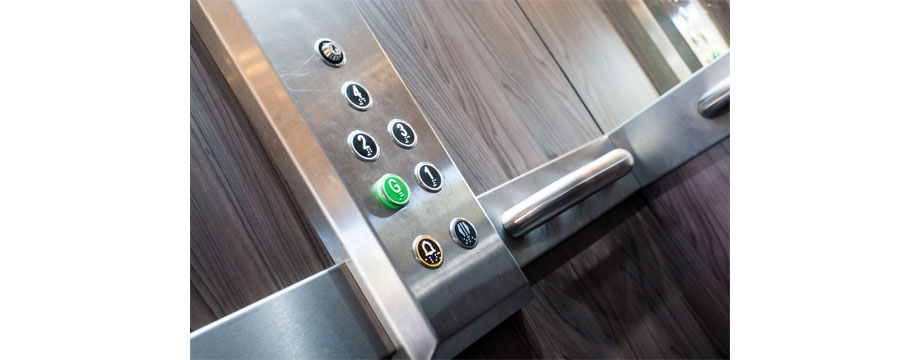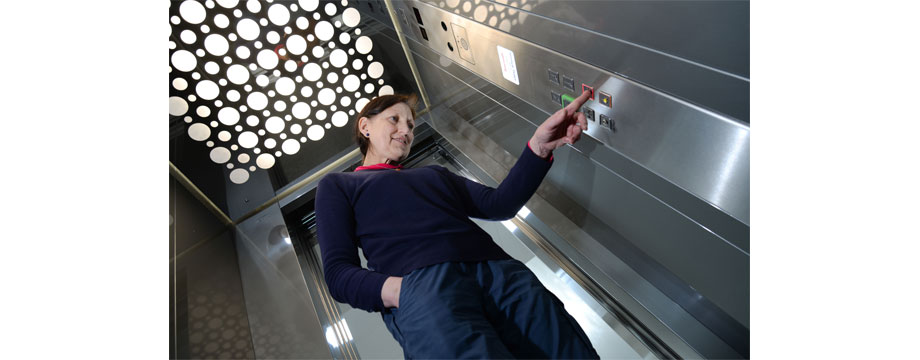By Alastair Stannah, Managing Director, Stannah Lifts Distribution & Service
The digital switchover of telephone lines in the United Kingdom is happening now. By 2025, Openreach will have phased out all copper analogue telephone lines in favour of optical fibre networks. Many building managers may already be aware of the need to change phone lines in the building, but some may not have realised that their lifts will be affected by the Public Switch Telephone Network (PSTN) switch off.
As part of the Remote Alarm on Passenger and Goods Passenger Lifts Standards EN 81-28 (2003), all lifts in the UK are required to have an emergency alarm that was traditionally connected to a rescue service via telephone. With the analogue to digital switchover, lift owners must now manage the transition of their emergency alarms from analogue phone lines to other digital alternatives. Choosing the right solution ahead of time is becoming essential for building owners and managers to keep their lifts compliant and their passengers safe.

Why the switchover is happening
In November 2017, BT Openreach announced that traditional copper-based telephony lines, which includes PSTN lines, would be phased out and eventually deactivated by the end of December 2025. New analogue telephone lines have not been installed in the UK for some years, but due to a rolling programme for telephone exchanges, a total national “stop sell” is planned for September 2023. Then, at the end of 2025, all support for analogue lines will be removed.
Phasing out the UK’s ageing network of copper will help Openreach prioritise the development of optical fibre networks for high-speed broadband in the United Kingdom and meet the government target for at least 85% of UK premises to have access to gigabit-broadband by 2025.
What the impacts will be on existing lift stocks
The implications of this move to telephone and internet service provision has been well publicised, however, the knock-on effects on equipment that are not immediately thought of as being connected to telephone lines are still emerging. One of those types of equipment is the stock of hundreds of thousands of existing lifts installed in the UK, which collectively transport millions of people per year.

All passenger lifts installed since 1999 in the UK are required to contain an emergency alarm. Once the emergency button is pushed, an auto-dialler provides two-way communication between the passengers and a rescue service, which is usually run by the lift service provider. The auto-dialler hardware is connected to a phone line with an Openreach socket.
The Lifts Regulations and EN 81-28 do not specify the type of communication link that should be used, but PSTN has been almost universally used in lift emergency alarms for several reasons. Historically, PSTN was once more easily available and reliable than other alternatives. Many alarm devices use the PSTN line’s DC voltage to avoid the need for a backup power supply, and data is transmitted over the line through the use of Dual Tone Multi Frequency (DTMF).
Optical fibre lines may not always be compatible with these existing emergency alarm units, even after adaptations are made, even with an “analogue telephone adaptor” (ATA) to support analogue devices on fibre connections. The router carrying the signal through the line will also require an uninterrupted power supply, otherwise the service will not operate in the event of a power failure.
If the emergency alarm is found to be non-functional during a 3-day line test under EN 81-28 regulations it will be declared non-compliant and switched off. Lift owners and facility managers therefore need to act soon before PSTN line services are withdrawn in their area.
The GSM phone line alternative
GSM (otherwise known as mobile or cellular) telephony provides a reliable and cost effective digital solution for most existing lifts. Without the need for physical phone lines and installations, a GSM module can be easily installed and battery-backed to provide a failsafe in the event of a power outage. Signal strength dips can also be resolved through a roaming SIM which connects freely to the best available network.
However, it is important to consider a professional and trusted managed SIM service, to ensure hassle-free and cost-effective virtual communication for your lift. Prepaid SIMs can run out of credit, expire or just get turned off mistakenly, and these situations can exist undiscovered until a real emergency happens, potentially leaving passengers stranded or in danger.
Stannah’s new portfolio of digital services includes a managed SIM service, which covers the cost of calls, line rentals and 24/7 connectivity monitoring, offering peace of mind to lift owners, improved product safety for users and reduced risk for the owner. For more information, visit the Stannah website to find your local service branch.
www.stannahlifts.co.uk/connected-services

- Log in to post comments













